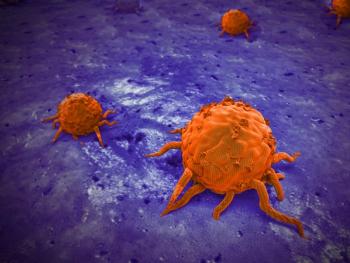
Oncology NEWS International
- Oncology NEWS International Vol 6 No 9
- Volume 6
- Issue 9
Merits of Conformal Radiotherapy vs Prostatectomy Are Debated
CHICAGO-Radiation oncologists have been trying to improve the delivery of external beam irradiation in a variety of ways in an attempt to increase local control of prostate cancer and thereby improve long-term survival, Jeffrey D. Forman, MD, professor of radiation oncology, Wayne State University, Detroit, said at the Prostate Cancer Shootout II conference.
CHICAGORadiation oncologists have been trying to improve the delivery of external beam irradiation in a variety of ways in an attempt to increase local control of prostate cancer and thereby improve long-term survival, Jeffrey D. Forman, MD, professor of radiation oncology, Wayne State University, Detroit, said at the Prostate Cancer Shootout II conference.
Conformal therapy, which delivers a higher radiation dose to the prostate gland without increasing rectal or bladder toxicity, decreased by 50% the degree of local recurrence of prostate cancer when given in conjunction with total androgen blockade, he said at the conference, sponsored by the Chicago Radiological Society, Chicago Urological Society, and Chicago Medical Society.
Regardless of the method of delivering radiation, external beam radiotherapy has not reliably or predictably controlled prostate cancer, argued Ralph W. deVere White, MD, professor and chairman of the Department of Urology, University of California, Davis, Medical Center, Sacramento.
When PSA levels were used as indicators of biochemical recurrence, failure rates for external beam radiotherapy were as high as 80% to 90%. When PSA was between 4 ng/mL and 10 ng/mL at the time of radiation, the failure rate at five years was 33%; when PSA was between 10 ng/mL and 20 ng/mL, the failure rate was 55%.
These figures were the same whether patients received conformal or standard external beam therapy or brachytherapy, Dr. deVere White said.
Neutron Irradiation for Prostate Cancer
An initial study of neutron irradiation performed in 1977 showed enhanced local control of prostate cancer, compared with standard proton irradiation at both five- and 10-year follow-up, Dr. Jeffrey Forman said at the Prostate Cancer Shootout II.
The greater local control achieved with neutrons translated into a significant increase in survival; at 10 years, men treated with neutrons were twice as likely to be alive as those treated with protons, he said.
Since there are only two functioning cyclotron facilities that produce neutrons in the United States today, this type of radiotherapy is not a realistic choice for most men with prostate cancer, Dr. Forman noted.
In the only straight-up randomized comparison of radical prostatectomy and external beam radiotherapy, which was conducted by the Veterans Administration Cooperative Group, prostate cancer failed to progress in only 48% of men who received radiation, as opposed to 75% of the men who had surgery.
A nonrandomized trial performed by Dr. deVere White produced similar findings: Prostate cancer failed to progress in 58% of the men who had radiotherapy, compared with 90% of the men who had radical prostatectomy.
These data may not be great, but they are all we have, and they show that radiotherapy does not work as well as surgery, Dr. deVere White said.
Articles in this issue
about 28 years ago
IL-2 Shows Promise in Treating Hematologic Cancersabout 28 years ago
Studies Show Who Seeks Mammography and Whyabout 28 years ago
New Policy Board Enters Tobacco Frayabout 28 years ago
Index Quantifies Bone Disease in Prostate Cancerabout 28 years ago
Wynder Urges Nutrition as an Adjunctive Cancer Therapyabout 28 years ago
Treating Other STDs May Reduce HIV Levels in the Semenabout 28 years ago
Bisphosphonates Improve QOL in Bone Lesion Patientsabout 28 years ago
Children Run Greatest Cancer Risk from Nuclear Testsabout 28 years ago
Trials of IV SNX-111 Paused, but Phase III Pain Trials Continueabout 28 years ago
IL-2 Termed ‘Gold Standard’ in Renal Cell CarcinomaNewsletter
Stay up to date on recent advances in the multidisciplinary approach to cancer.





















































































